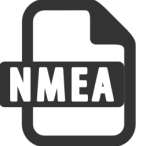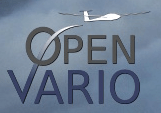NMEA Protcols #

[OpenVario] [Borgelt] [Cambridge] [XCVario] [Disable]
This option is used to set the protocol of the data that the variometer sends ‘variometer data’ to the connected device via Bluetooth, Wifi or serial.
OpenVario #

This is the default setting of the XCVario and offers the essential data of the variometer sensors such as the barometric pressure for the altitude, the dynamic pressure for the airspeed, TE Vario information and the outside temperature, provided the temperature sensor is installed accordingly. The synchronization of MC, bugs or ballast is not implemented by XCSoar and is therefore not sent.
The OpenVario (POV) protocol is defined as follows:
$POV,P,<baro>,Q,<dp>,E,<te>,T,<temp>“ Example: P,1018.35: 1018.35 hPa barometric pressure E,2.3 : +2.3 in m/s vario climb T,23.52: 23.52° OAT temperature in deg C
A detailed description of the protocol can also be found here: https://www.openvario.org/doku.php?id=projects:series_00:software:nmea
Borgelt #

The second option is [Borgelt], ‘Borgelt B50/B800’ is to be set as the device driver on XCSoar. The Borgelt protocol $PBB50 supports the synchronization of MacCready value (MC), ballast or insects (bugs), from and to the XCVario. The barometric height is not part of the Borgelt protocol, but is transmitted via a generic interface using the $PTAS1 NMEA data set as height above the standard pressure area (1013 hPa). The QNH must therefore be set separately on the XCSoar and on the Vario, and enables, for example, a standard setting on the XCSoar and a QNH setting on the Vario, which can make sense for flights near airspace restrictions that are usually related to the standard .
Format see below, this format is also automatically sent to XCSoar and always evaluated there, regardless of the protocol driver set, as well as the standardized FLARM data.
The Borgelt datasets have the following format:
$PBB50,AAA,BBB.B,C.C,DDDDD,EE,F.FF,G,HH*CS<cr><lf> AAA = TAS 0 to 150 knots BBB.B = Vario, -10 to +15 knots, negative sign for sink C.C = MacCready 0 to 8.0 knots DDDDD = IAS squared 0 to 22500 EE = bugs degradation, 0 = clean to 30 % F.FF = Ballast 1.00 to 1.60 G = 1 in climb, 0 in cruise, Note: Original Borgelt docu shows vice versa HH = Outside airtemp in degrees celcius (may have leading negative sign) CS = standard NMEA checksum $PTAS1,xxx,yyy,zzzzz,aaa*CS<CR><LF> xxx: CV or current vario. =vario*10+200 range 0-400(display +/-20.0 knots) yyy: AV or average vario. =vario*10+200 range 0-400(display +/-20.0 knots) zzzzz: Barometric altitude in feet +2000, related to QNH standard 1013.25 setting aaa: TAS knots 0-200 CS: XOR Checksumme
Cambridge #

Using the Cambridge !W (CAI302) format, other devices can be supplied with data, for example LX-Mini-Map, LK8000 and others that only understand this format. The Cambridge format supports synchronization of MC, Ballast Bugs and QNH (QNH from device only), but no AHRS information. All relevant data fields are supported, except for the wind vector, which is calculated in the cross-country flight program. This format is available in the current software versions, so far as an experimental format and only tested with XCSoar, further tests for other devices are necessary.
* Cambridge 302 Format
!W,<1>,<2>,<3>,<4>,<5>,<6>,<7>,<8>,<9>,<10>,<11>,<12>,<13>*CS<CR><LF> <1> Vector wind direction in degrees <2> Vector wind speed in 10ths of meters per second <3> Vector wind age in seconds <4> Component wind in 10ths of m/s + 500 (500 = 0, 495 = 0.5 m/s tailwind) <5> True altitude in Meters + 1000 <6> Instrument QNH setting <7> True airspeed in 100ths of Meters per second <8> Variometer reading in 10ths of knots + 200 <9> Averager reading in 10ths of knots + 200 <10> Relative variometer reading in 10ths of knots + 200 <11> Instrument MacCready setting in 10ths of knots <12> Instrument Ballast setting in percent of capacity <13> Instrument Bug setting *CS Checksum, XOR of all bytes of the sentence after the ‘!’ and before the ‘*’
XCVario #

For the XCVario with AHRS, a separate protocol with its own “XCVario” device driver was developed which combines the elements of the setup, the transmission of sensor data and the AHRS capability of the new series in the new protocol $PXCV. The protocol has already been adopted in the XCSoar project and is supported since releases (> 6.8.16). With the XCVario protocol, as with the Borgelt protocol, a bidirectional synchronization of MacCready value, ballast and bow as well as QNH (QNH only from the device) can be achieved, and the transmission of the AHRS sensor data for the position indicator (horizon) is also fully supported.
The protocol unifys basic components of the Cambridge CAI302, Borgelt, and the OpenVario protocol. The protocol also supports QNH synchronization. Series 2020 devices without IMU chip cannot supply the acceleration datafields.
The XCVario sentence has the following format:
$PXCV, BBB.B, // Vario, -30 to +30 m/s, negative sign for sink C.C, // MacCready 0 to 10 m/s EE, // Bugs degradation, 0 = clean to 30 % F.FF, // Ballast 1.00 to 1.60 G, // 1 in climb, 0 in cruise, Note: Original Borgelt docu shows vice versa (bug in docu) HH.H, // Outside airtemp in degrees celcius ( may have leading negative sign ) QQQQ.Q, // QNH e.g. 1013.2 PPPP.P, // Static pressure in hPa QQQQ.Q, // Dynamic pressure in Pa RRR.R, // Roll angle III.I, // Pitch angle X.XX, // Acceleration in X-Axis Y.YY, // Acceleration in Y-Axis Z.ZZ, // Acceleration in Z-Axis *CHK = standard NMEA checksum <CR><LF>
Disable #

With this selection, all NMEA transmissions from this menu item are switched off, e.g. if no external device is present, or if only the NMEA data sets from other settings, e.g. only the data sets of the AHRS subsystem or the compass are of interest.




